 Weird Stuff
Weird Stuff  Weird Stuff
Weird Stuff  Our World
Our World 10 Ways Your Christmas Tree Is More Lit Than You Think
 Movies and TV
Movies and TV The 10 Coolest Stars to Set Sail on The Love Boat
 History
History 10 Things You Didn’t Know About the American National Anthem
 Technology
Technology Top 10 Everyday Tech Buzzwords That Hide a Darker Past
 Humans
Humans 10 Everyday Human Behaviors That Are Actually Survival Instincts
 Animals
Animals 10 Animals That Humiliated and Harmed Historical Leaders
 History
History 10 Most Influential Protests in Modern History
 Creepy
Creepy 10 More Representations of Death from Myth, Legend, and Folktale
 Technology
Technology 10 Scientific Breakthroughs of 2025 That’ll Change Everything
 Weird Stuff
Weird Stuff Ten Bizarre Facts About The Doge Meme
 Our World
Our World 10 Ways Your Christmas Tree Is More Lit Than You Think
 Movies and TV
Movies and TV The 10 Coolest Stars to Set Sail on The Love Boat
Who's Behind Listverse?

Jamie Frater
Head Editor
Jamie founded Listverse due to an insatiable desire to share fascinating, obscure, and bizarre facts. He has been a guest speaker on numerous national radio and television stations and is a five time published author.
More About Us History
History 10 Things You Didn’t Know About the American National Anthem
 Technology
Technology Top 10 Everyday Tech Buzzwords That Hide a Darker Past
 Humans
Humans 10 Everyday Human Behaviors That Are Actually Survival Instincts
 Animals
Animals 10 Animals That Humiliated and Harmed Historical Leaders
 History
History 10 Most Influential Protests in Modern History
 Creepy
Creepy 10 More Representations of Death from Myth, Legend, and Folktale
 Technology
Technology 10 Scientific Breakthroughs of 2025 That’ll Change Everything
10 Awesome Inventions That Sprung From Celebrity Brains
Nobel Prize winners in the sciences are 15–25 times more likely to be involved in the arts than their fellow scientists. Early training in arts and crafts improves a scientist’s manual dexterity as well as his or her abilities to observe, think abstractly, and recognize patterns.
Oddly, few celebrity inventors are known for their artistic talents. Benjamin Franklin is famous for his discoveries in electricity, oceanography, and demographics, but few know that he composed music and played the harp, violin, and guitar. Marie Curie is renowned as the first woman to win a Noble Prize and the first person to win two. But few could quote her poetry. The same is true of those who owe their celebrity to their artistic talents but not their inventions.
10Musical Instrument Support
Eddie Van Halen

Rock legend Eddie Van Halen inherited his love for tinkering from his father. Dad played a clarinet and saxophone in a band, but he found it difficult to play his reed instruments when he started losing his bottom teeth. So he fashioned a prosthesis out of white Teflon that filled the gap in his mouth.
Like his father, Eddie would see a problem and solve it himself. To get a sound he wanted, he’d alter his guitar or build his own from scratch. When he found most guitar necks too round on the back, he used sandpaper to flatten them. When the lacquer made his fingers slip or stick, he built a guitar out of natural wood. When he found that whammy bars would not stay in tune, he designed his own nut to adjust the tension on the strings.
Eventually, Eddie realized that he could patent his ideas. One patent sprang from the need to tune his guitar during a performance. Usually, he’d tune his guitar before the concert using the tuning pegs on the neck. But if a guitarist wants a “different range of notes, different sound qualities or feel, or various musical effects,” the performer may find it awkward and imprecise to retune the guitar while onstage. Eddie developed a tailpiece/bridge with a simple lever to adjust the string tension (much as a whammy bar does) and retune the guitar.
Perhaps Eddie’s most familiar invention is his stringed instrument support. Famous for his two-handed tapping technique on his guitar, Eddie developed a support attached to the back of his guitar that flipped the instrument to a horizontal position for optimal viewing of the strings. The support holds the guitar against the guitarist’s belly so that he can pick away without either hand having to hold the guitar.
9Fish Attractor
Gary Burghoff
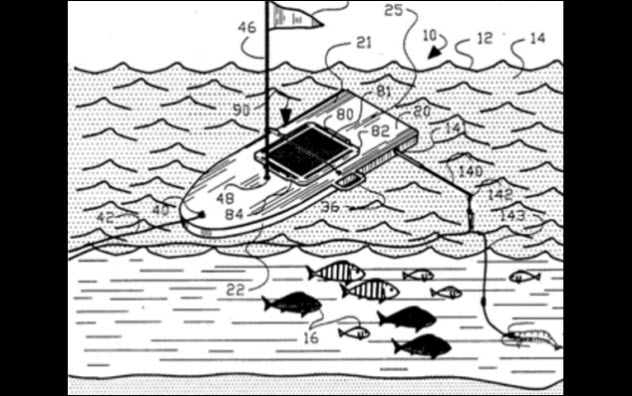
Gary Burghoff, the actor who played Walter “Radar” O’Reilly in the movie and TV series M*A*S*H, owns several patents, including one issued in 1991 for a device to lift a toilet seat without using your hands.
The rest of his patents are related to fishing. In an interview with The News, Burghoff explained, “I’ve been fishing since I was three years old, and I love it. I also like to tinker and invent things.” He invented a fishing rod with a curved handle, making it easier to fight fish in a fighting chair. But it can also be used for normal casting and trolling.
In 1990, Burghoff filed a patent for a fish attractor. A flat flotation device with a meshed basket slung underneath, it allowed chum to filter out, enticing fish to the line and hook attached to the device. “The body member is adapted to ride upon currents of oceans and rivers to remove the device from human activity,” his application states. The flotation device also provides shade, essentially “an artificial haven for fish.”
Before his original invention was even awarded a patent, he filed for another patent on an “Enhanced Fish Attractor.” This invention was identical to the original attractor except that it was festooned with “flexible webs” to simulate seaweed. The flotation device could also project lights and audible sounds into the water as an added enticement—like a hot nightclub for largemouth bass.
8Memory Builder Game
Mark Twain
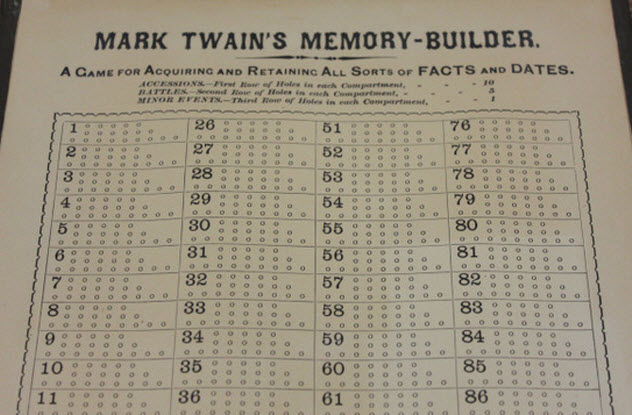
Mark Twain (aka Samuel Clemens) was not just the author of classics such as The Adventures of Tom Sawyer and Adventures of Huckleberry Finn, he was also the owner of three patents. His most lucrative invention was his improved scrapbook. Twain thought that gluing each item into a scrapbook was messy and too much work, so he coated each page of his scrapbook with adhesive. He sold over 25,000 copies.
By far, his most important invention was the elastic hook clasp to make straps adjustable and detachable. Intended to replace suspenders, the adjustable clasp could be used for vests, pantaloons, shirts, corsets, and underpants—anything that needed a strap to hold it in place. When the brassiere was invented later, the elastic hook clasp gained a wider use. Today, it can be found between nearly every woman’s shoulder blades.
Twain’s experiences with inventions were not always positive. He was persuaded to invest a total of $50,000 on the Paige Compositor, an automatic typesetting machine. However, it was too complicated to maintain, and the simpler Linotype took over the market, bankrupting Twain.
He was also friends with inventor Nikola Tesla and was invited one evening to see Tesla’s high-frequency oscillator. Twain decided to stand on the oscillator while it was in operation, and it literally caused him to poop his pants. He once wrote: “I have, as you say, been interested in patents and patentees. If your books tell how to exterminate inventors, send me nine editions. Send them by express [mail].”
Despite this, Twain went on to invent one more thing—Mark Twain’s Memory Builder: A Game for Acquiring and Retaining All Sorts of Facts and Dates. Patented in 1885, the game was inspired by the difficulties his daughter had with memorizing historical dates.
Two players would choose a historical century and a nation (although multiple centuries and nations could also be played). Then each player would name an event in that country’s history and place a pin corresponding to the year of the event on a board. After a predetermined time limit had expired, the players would count up their pins and see who won.
In 1891, Twain sent prototypes of the game to toy shops, but the memory game was too complicated. It never went into mass production.
7Style Snaps
Melissa George
You might recognize the Australian actress Melissa George for her roles in Friends, Grey’s Anatomy, Alias, Lie To Me, The Good Wife, and the miniseries The Slap. As of late 2015, she is slated to star in the NBC series Heartbreaker. She has appeared in a few movies, including Derailed (2005) and 30 Days of Night (2007). Despite her acting success, she has said she makes far more from her invention.
George was living in New York City in 2008 when she discovered a problem: Her expensive Balenciaga pants were hemmed for heels, not flats. While walking with her pant legs dragging across the sidewalk, she came up with a solution. “I didn’t want to buy two pairs of the same pants or jeans just to be able to wear them with my flats,” she explained in an interview with People magazine. “It’s costly and takes up too much room, especially living in New York City, where space is limited.”
Her inspiration became Hemming My Way Style Snaps, an adhesive snap that allowed a person to temporarily alter the length of pant legs without sewing or ironing. “You can snap up your long hem for a walk in the park,” she said to People, “and unsnap to wear your favorite heels for lunch.” In just the first 10 months of 2012, her invention netted £15 million. As of 2014, she also had a patent for a portable cosmetic organizer.
6Packing Rack And Pulse-Rate Monitor
The Marx Brothers
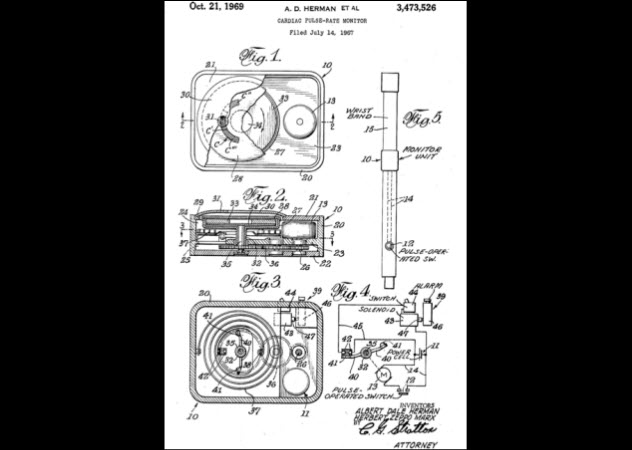
The five Marx brothers were born into a family of entertainers which started a musical vaudeville act in 1904. The four older brothers—Julius, Adolph (later Arthur), Leonard, and Milton—adopted the monikers in 1915 of Groucho, Harpo, Chico, and Gummo, respectively. Their youngest brother, Herbert, joined the group two years later when Gummo dropped out to fight in World War I. Herbert became Zeppo.
Groucho, Chico, and Harpo are the best known of the brothers, remaining together until after World War II. Gummo and Zeppo were out of the act by the early 1930s and formed a successful talent agency instead.
By then, Gummo already had one patent to his name. He filed it in 1918, probably while he was still in the service, and called it the Packing Rack. A box with shelves to organize personal objects, the Packing Rack never caught on.
Zeppo, however, had a brilliant engineer’s mind and was often tasked with keeping his brothers’ cars running. In 1941, he formed Marman Products which manufactured the Marman Clamp. In World War II, the clamp was used to secure cargo for transport, including attaching the “Little Boy” atomic bomb to the Enola Gay. Today, the Marman Clamp can be found in virtually all moving vehicles, including the Cassini Orbiter.
Zeppo also owns three patents, two of them for devices that monitor a person’s heartbeat. His invention can be found today on almost any exercise machine with heart-rate monitoring capabilities.
5Artificial Heart
Paul Winchell
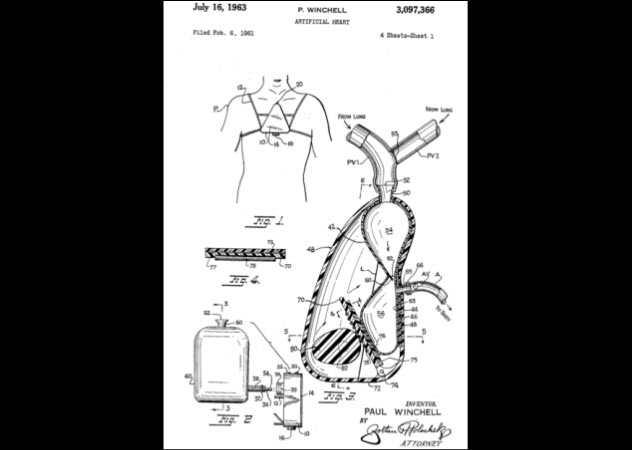
If you don’t immediately recognize the name of the television and movie star Paul Winchell, you probably recognize his voice. A stutterer as a child, he took up ventriloquism to help him conquer his impediment. In time, he and his dummy had their own TV show. Later, he became a voice actor.
His voice was used for Tigger from the late 1970s to the late 1990s in Disney’s Winnie the Pooh TV shows and movies. He voiced Boomer in Disney’s The Fox and the Hound (1981) and Shun Gon in The Aristocats (1970). For television, he voiced Sam-I-Am in Dr. Seuss on the Loose, Dick Dastardly in Wacky Races, and Gargamel in The Smurfs. Remember Mr. Owl in those old Tootsie Roll commercials? Or the Scrubbing Bubbles for Dow Bathroom Cleaner? That was Winchell.
He also owned more than 30 patents, including a battery-operated heated glove, a flameless cigarette lighter, a retractable fountain pen, an “invisible” garter belt, and a disposable razor. After he studied premed at Columbia and worked with the American Red Cross and the Leukemia Society, he patented a portable blood plasma defroster, a piezoelectric diaphragm, and an artificial heart.
Often, Dr. Robert Jarvik is erroneously credited with inventing the artificial heart. In 1982, Jarvik designed the first artificial heart—the Jarvik-7—for implantation in a human, but it was not the first artificial heart. His design was partially based on Winchell’s prototype.
A chance meeting between Winchell and Dr. Henry Heimlich (inventor of the Heimlich maneuver) led to an invitation for Winchell to watch Heimlich perform surgery. During the operation, Winchell came up with the idea of an artificial heart that would keep blood flowing during surgery. With Heimlich’s help, Winchell designed and patented the first artificial heart.
Winchell’s heart design seems crude compared to modern artificial hearts. The apparatus mimicked the pumping action of the heart but was operated by a motor outside the body along with a battery pack. Winchell later said that his experience building his own ventriloquist dummies helped him with his design. “Odd as it may seem,” he said in his autobiography, “the heart wasn’t that different from building a dummy; the valves and chambers were not unlike the moving eyes and closing mouth of a puppet.”
4Straitjacket Toy
Harry Houdini
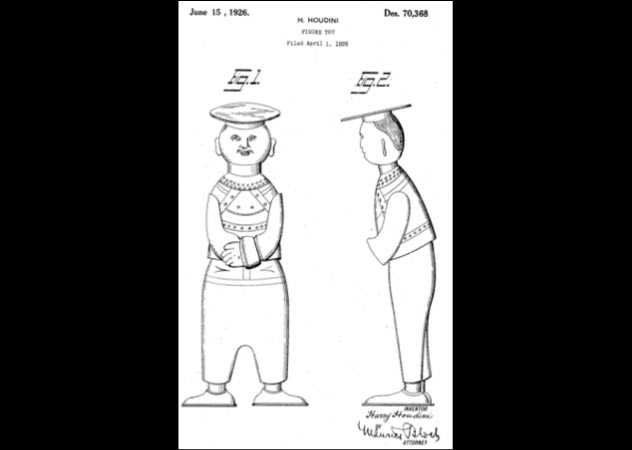
Harry Houdini, the world’s best-known escape artist and illusionist, was also a tinkerer. He often built his own props alongside his chief mechanic, Jim Collins. Houdini’s tinkering led to at least two patented inventions.
His first patent was filed in June 1917, just a few months after America entered World War I. By that time, the 43-year-old Houdini was too old to join the military. Instead, he sold war bonds and taught soldiers how to escape from German handcuffs and prisons. He also tried to solve a serious problem for the US Navy. Their divers needed assistance donning their bulky deep-sea diving suits. In addition, they couldn’t shed the suits underwater if they had a problem with air or became entangled.
The US Navy’s deep-sea suit was one piece. The diver had to step into it and pull it up to his or her neck. When underwater, the diver didn’t have enough time to wiggle out of the suit and safely ascend to the surface. Houdini’s solution was to cut the suit in two so that it could be slipped on and off like a shirt and pants. The two halves met at the waist where a locking ring would seal the diver into the suit. Houdini claimed that he had tested it and an inexperienced diver could shed the suit in 45 seconds. Apparently, it was never adopted by divers.
Houdini also owned a patent on a toy based on his famous straitjacket escape. For years, Houdini had an act where he was strapped into a straitjacket, his feet were tied to a cable, and the cable was tied to a crane. Houdini was then hoisted into the air upside down, and in front of a crowd, he freed himself from the straitjacket.
His toy was a man confined in a straitjacket with his arms locked against his sides. Atop his head was a disk. When the toy was wound with a key, the disk would spin. If the toy was placed on its head, it would rotate. The centrifugal force would free the arms, opening them wide as if the toy were saying “Ta-dah!” The patent was awarded just four months before Houdini’s death, which is probably why it was never mass-produced.
3Lip Balm Dispenser
Charlie Sheen
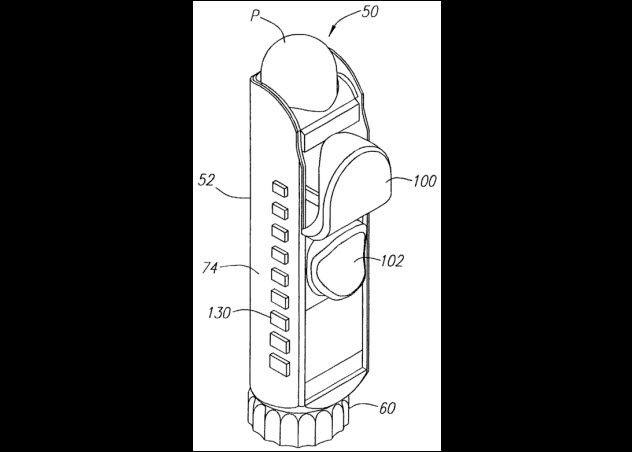
Charlie Sheen was the star of such hit movies as Platoon (1986), Wall Street (1987), Eight Men Out (1988), and Hot Shots (1991). As Charlie Harper on the sitcom Two and a Half Men, Sheen was reportedly paid $1.8 million per episode, which made him the highest-paid actor on TV at the time. A year after he was fired from that project, Sheen starred in the sitcom Anger Management.
Sheen said that the inspiration for his Lip Balm Dispenser came one day when he had trouble applying his lip balm while driving. He worked on the project during his endless hours in rehab. In June 1999, he filed a patent application for his dispenser. “I just wanted to make something better than I used every day,” he said later on Jimmy Kimmel Live.
The lip balm is inserted into the dispenser and protected by a cap that can be removed with the flick of a finger and closed the same way. No longer would the user need both hands to remove the lid or recap it. As he pointed out in his abstract, the dispenser is even handy when the user is wearing gloves or mittens. The dispenser has a window in the front so the user can see when the lip balm is nearly gone.
Sheen took his invention to ChapStick to see if they’d buy it. They were only interested if the dispensers could be manufactured for less than seven cents each. However, he couldn’t get the cost down that much, and now his invention is in limbo. He does have the prototype dispenser to show his friends. “I bring it out at parties,” he told the Toronto Sun in an interview.
2Butt-Enhancing Pantyhose
Julie Newmar
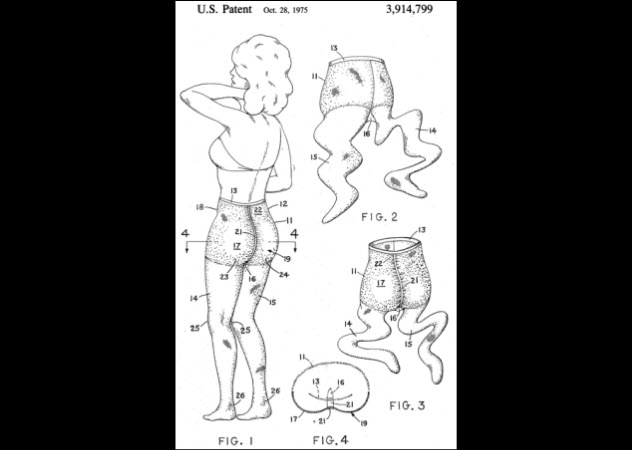
Julie Newmar has a pedigree in both science and the arts: Her father was an engineering professor, and her mother was a Ziegfeld Girl. With an IQ of 134, Newmar owns three patents and has a Tony for her stage work. She has appeared in a few theatrical movies and a slew of forgettable TV movies. By far, her most famous role was Catwoman in the campy Batman series in the 1960s. Her skintight outfit was a big reason why the sitcom became a cult classic.
All three of Newmar’s patents are for fashion-related inventions. At nearly 182 centimeters (6′) tall, Newmar invented a pantyhose belt for tall women that “keeps the crotch from sagging to the knees.” Her patent for a bra reads like an anatomy and engineering textbook. Patented during the mid-1970s, her brassiere offered support while giving the appearance of going braless, which was fashionable at that time.
Newmar’s brassiere supported the breasts from underneath, allowed for spaghetti straps, eliminated the underwire, and made the cups seamless. According to the patent, the material was also meant to be so thin that the “impressions of the wearer’s nipples are visible through sheer outer garments.”
Newmar’s third patent focused on a woman’s buttocks. She found that pantyhose that flattened the belly also tended to flatten the butt. “I have two drawers of pantyhose, but I don’t like what they do for my backside,” she said in an interview with People magazine. Her solution was “pantyhose with shaping band for cheeky derriere relief.”
The so-called shaping band was essentially the seam of the pantyhose that Newmar repositioned so that it was hidden between the woman’s butt cheeks. While her pantyhose still had an elastic waistband to flatten the belly, the shaping band did not pull the material tight across the butt, giving the cheeks a more rounded, natural look.
“They make your derriere look like an apple instead of a ham sandwich,” Newmar told People magazine. “It’s a simple improvement. I just gathered the back seam. But it gives a woman the firm fanny of a 12-year-old.”
1Cardboard Furniture
Frank Gehry
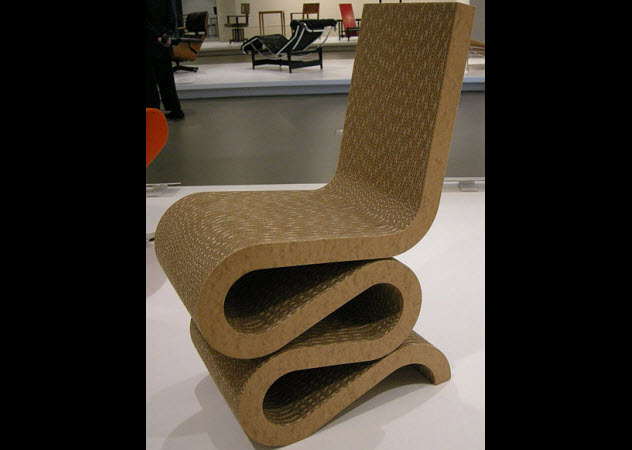
Frank Gehry is one of the few architects in history who is also a celebrity outside architectural circles. Considered among the most acclaimed designers in the 20th century, his bold, postmodern buildings are eye-popping and unique.
Among his most famous creations is the stainless steel Walt Disney Concert Hall in LA, designed to look like the billowing sails on sailboats. His Lou Ruvo Center for Brain Health in Las Vegas looks like a paper building that is collapsing. New York City’s Beekman Tower has ripples running across its facade like the surface of a pool. In Seattle, the Experience Music Project Museum at the base of the Space Needle is a stop for the city’s famous monorail. Gehry made the steel and aluminum walls of the museum look as if they’re flapping in the monorail’s wake. He also designed the Fred and Ginger House in Prague to look like a couple dancing.
To furnish his unusual buildings, Gehry patented a unique way to construct chairs, tables, and other “load-bearing” furniture. He secures several sheets of corrugated cardboard together with an adhesive and then cuts them into the desired shape of furniture.
As Gehry writes in his patent application, “The furniture produced by this technique is inexpensive yet strong and durable; moreover, a wide variety of interesting and attractive shapes can be formed. Perhaps most important from an aesthetic point of view is the unusual texture of the finished surface of the article formed by the adjacent cut edges of the cardboard sheets.”
Gehry created a line of furniture called “Easy Edges” to sell some of his creations. Probably because his name is associated with these pieces, his furniture is more expensive than he’d hoped.
Steve is the author of 366 Days in Abraham Lincoln’s Presidency: The Private, Political, and Military Decisions of America’s Greatest President, and his articles have appeared in KnowledgeNuts and Gizmodo.








